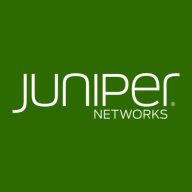

Cisco Meraki Wireless LAN and Juniper Mist Wireless Access Points compete in the wireless networking category. Juniper Mist appears to have the upper hand due to its innovative AI-driven features, which offer dynamic network analysis and troubleshooting, providing users with clearer insights and faster issue resolution.
Features: Cisco Meraki Wireless LAN offers centralized cloud-based management, easy configuration via its dashboard, and robust security. It provides seamless control of networks from anywhere, making it ideal for smaller organizations. Juniper Mist emphasizes AI-driven network management with its Virtual Network Assistant for automated problem resolution, detailed insights, and comprehensive security.
Room for Improvement: Cisco Meraki's pricing and licensing model are seen as obstacles, with a restrictive subscription model impacting service continuity when lapsed. Users also desire more granular logging and improved support. Juniper Mist, while highly valued for AI insights, may benefit from stronger third-party integration, enhanced external security, and more detailed reporting capabilities.
Ease of Deployment and Customer Service: Cisco Meraki excels in deploying across various cloud environments, leveraging a user-friendly cloud dashboard for resource management. Its customer service is generally praised but can vary in technical support consistency. Juniper Mist facilitates swift cloud-based deployment and has a reliable support service, although its perceived high cost impacts user experience concerning value.
Pricing and ROI: Cisco Meraki is viewed as expensive due to annual licensing, affecting ROI, especially in large deployments. While performance justifies costs, a new pricing strategy could boost its competitiveness. Juniper Mist, although costly, offers flexible licensing and its AI features present significant value, potentially offering better ROI through network optimization and operational efficiency.
It would be better if the SLA of technical support was less than four hours.
My impression of Juniper support is generally good, and I would rate it probably a 9.
Technical support is very good.
Meraki is not scalable enough since it straightforwardly maps its products to segmented specifications.
The cloud, which operates on Amazon Web Services (AWS), can support unlimited access points.
It's built for larger environments.
We have experienced many instances where we have experienced a lag in our network, and I am not sure if it is due to their devices or our network.
Stability is not an issue for me because it comes with Cisco's proven manufacturer quality.
The most important improvement needed is to eliminate the limitation of uplinks.
Some of the newer models of the Cisco Meraki Wireless LAN access point have encompassed the new wireless protocols and increased the strength of their antennas.
Juniper products are still coming to market, HP offers its own access point range, which competes with Juniper's premium Mist access points intended for enterprise customers.
I suggest that the AI tool in the Juniper Mist Wireless Access Points needs to be a little bit more ChatGPT-like, allowing easier communication in normal language instead of requiring specific prompts.
The reporting logs require improvement in terms of clarity.
Cisco Meraki Wireless LAN is on par with other devices in that category, offering competitive pricing.
The pricing of Cisco Meraki Wireless LAN is not competitive enough for the SMB market compared to other brands.
Regarding pricing, Juniper's cost rates as a seven on a scale where one represents a high price and ten represents a low price.
The price is very high, which is why not all enterprises can purchase this product.
Juniper Mist is cheaper than Meraki, placing it in the middle of the pack.
It also manages security clients and switches, providing a single dashboard to manage multiple network infrastructures.
The ability to program all access points from the Cisco Meraki Wireless LAN dashboard, view the status of all of them, and examine the individual devices connected to each access point is very valuable.
I have gained valuable insights from the Mist Cloud's analytics and network insights, as it tells you a lot of things, including details about Microsoft Teams calls, identifying which calls were good or bad, and correlating that to the client's signal and which access point the client was connected to at the time.
From my perspective, the Juniper reporting logs are clear and provide necessary data, which supports better management and diagnosis.
It's a cloud solution with Mist, which helps troubleshoot and provides visibility to look at different access points.
| Product | Market Share (%) |
|---|---|
| Cisco Meraki Wireless LAN | 11.5% |
| Juniper Mist Wireless Access Points | 5.6% |
| Other | 82.9% |


| Company Size | Count |
|---|---|
| Small Business | 68 |
| Midsize Enterprise | 26 |
| Large Enterprise | 31 |
| Company Size | Count |
|---|---|
| Small Business | 11 |
| Midsize Enterprise | 4 |
| Large Enterprise | 8 |
Juniper Wireless Access Points work in conjunction with Juniper Mist Cloud Services and Mist AI to deliver premier wireless access capabilities. The Juniper Mist Edge extends microservices to the campus to bring agility and scale while enabling new applications at the edge.
We monitor all Wireless LAN reviews to prevent fraudulent reviews and keep review quality high. We do not post reviews by company employees or direct competitors. We validate each review for authenticity via cross-reference with LinkedIn, and personal follow-up with the reviewer when necessary.